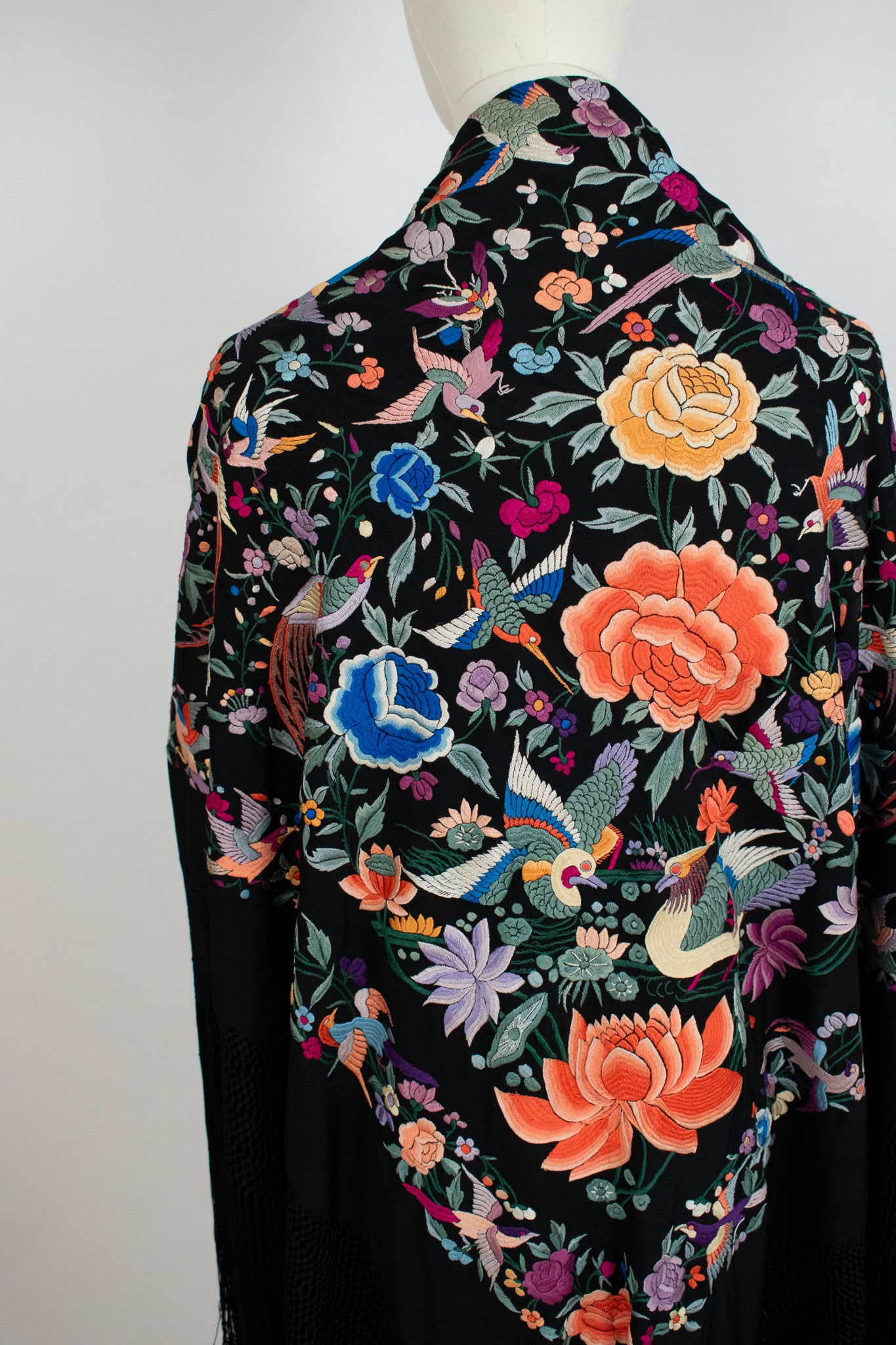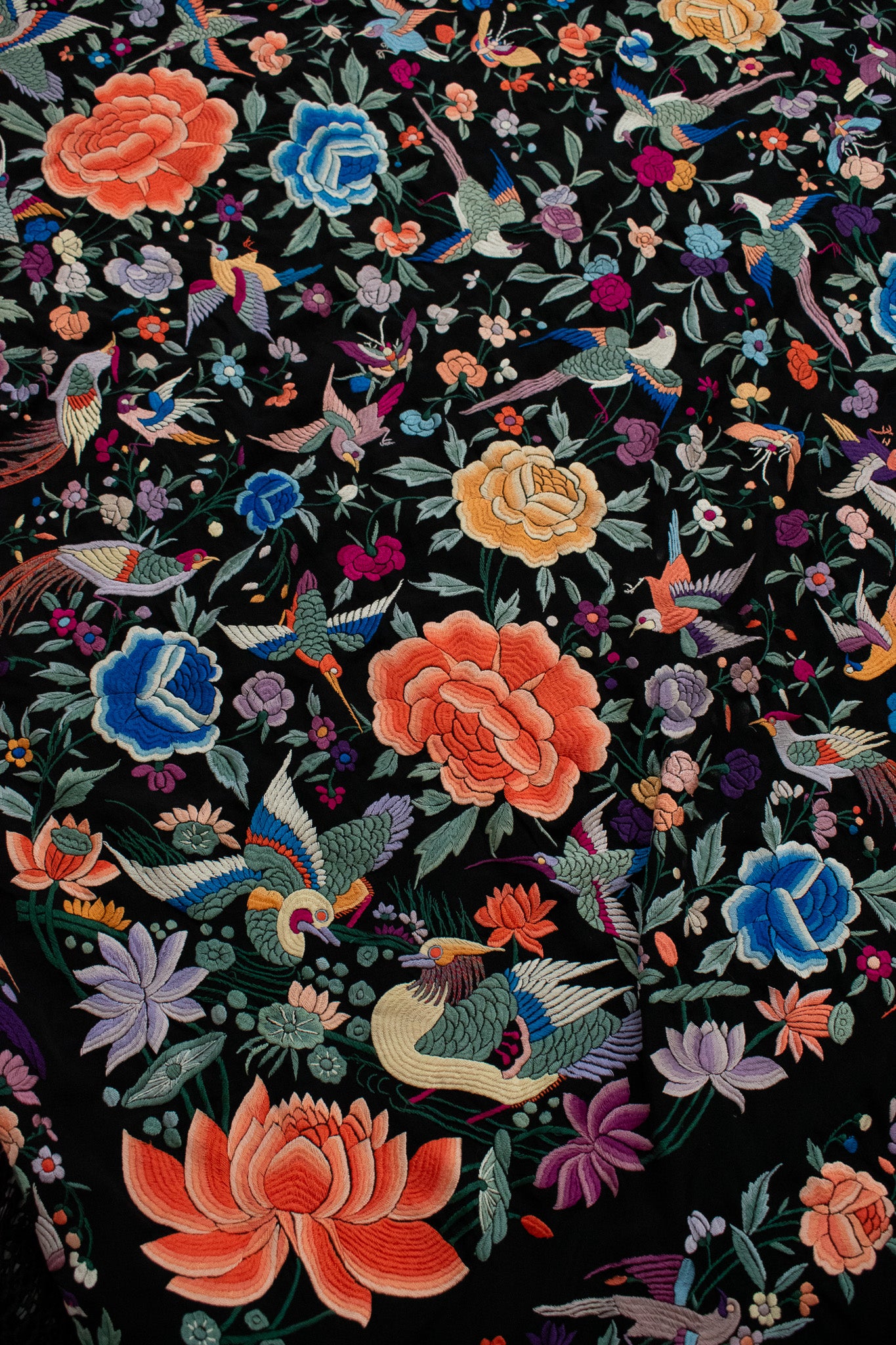House of Eliza
Heavily Embroidered With Birds Flowers Butterflies Circa 1990/1910 Black Silk Canton Piano Fringed Shawl
Heavily Embroidered With Birds Flowers Butterflies Circa 1990/1910 Black Silk Canton Piano Fringed Shawl
Couldn't load pickup availability
Share
This antique silk embroidered Canton piano shawl dates back to the early 1900s. It is absolutely magical.
It is heavily embroidered with birds of paradise, large flowers and butterflies with thick hand knotted super soft long silk macramé fringed edges. It is absolutely stunning and heavy.
Size
50" x 48" without fringing
The fringing is 22" long
Condition Report
There is some candle wax on one area of the fringing and a splash of wax above this area of fringing which leads us to believe this was once used as a piano shawl. Please see photos.
Please note colours may vary depending on your screen.
This is a vintage piece. Threads may be lose, imperfections may occur. We are always very honest with our listings and will always list any age related issues we notice but please be aware that this shawl is around 100 years old.
History of Canton & Manilla Shawls
Known as Mantones de Manila in Spanish, these shawls earned their name due to their trans-shipment through Manila. Shawls held a longstanding presence in European fashion, serving dual purposes of providing warmth and functioning as decorative accessories. However, in the early 19th century, a surge of Chinese shawls entered the scene, particularly in the Hispanic world, where they became integral to the national dress of various regions. Notably, while square fringed shawls were not a customary part of Chinese attire, the Canton shawl emerged as a distinctive East-West hybrid.
The allure of these shawls lay in their exoticism, and although commissioned by Western merchants, the designs predominantly featured Chinese motifs. While early examples displayed Western elements, such as a fashionable nosegay tied with a ribbon around 1800, these designs transcended China's borders, reaching the Ottoman Empire and influencing local embroideries, likely inspired by imported French silks. Despite Western influences, the majority of motifs retained a local flavor, drawing on symbols familiar to embroideresses for personal or regional use. Each element conveyed a meaning, often prophylactic or wishing 'good luck,' and while the symbolism might be lost or reinterpreted outside China, it found resonance in diverse cultures, with peonies becoming roses and wisteria trails transformed into grapes, particularly popular in the sherry-producing area of Jerez.
In essence, Mantones de Manila marked a fascinating intersection of East and West, embodying a blend of cultural influences that transcended geographical boundaries and evolved into symbols laden with meaning in both their places of origin and the diverse regions they adorned.




















